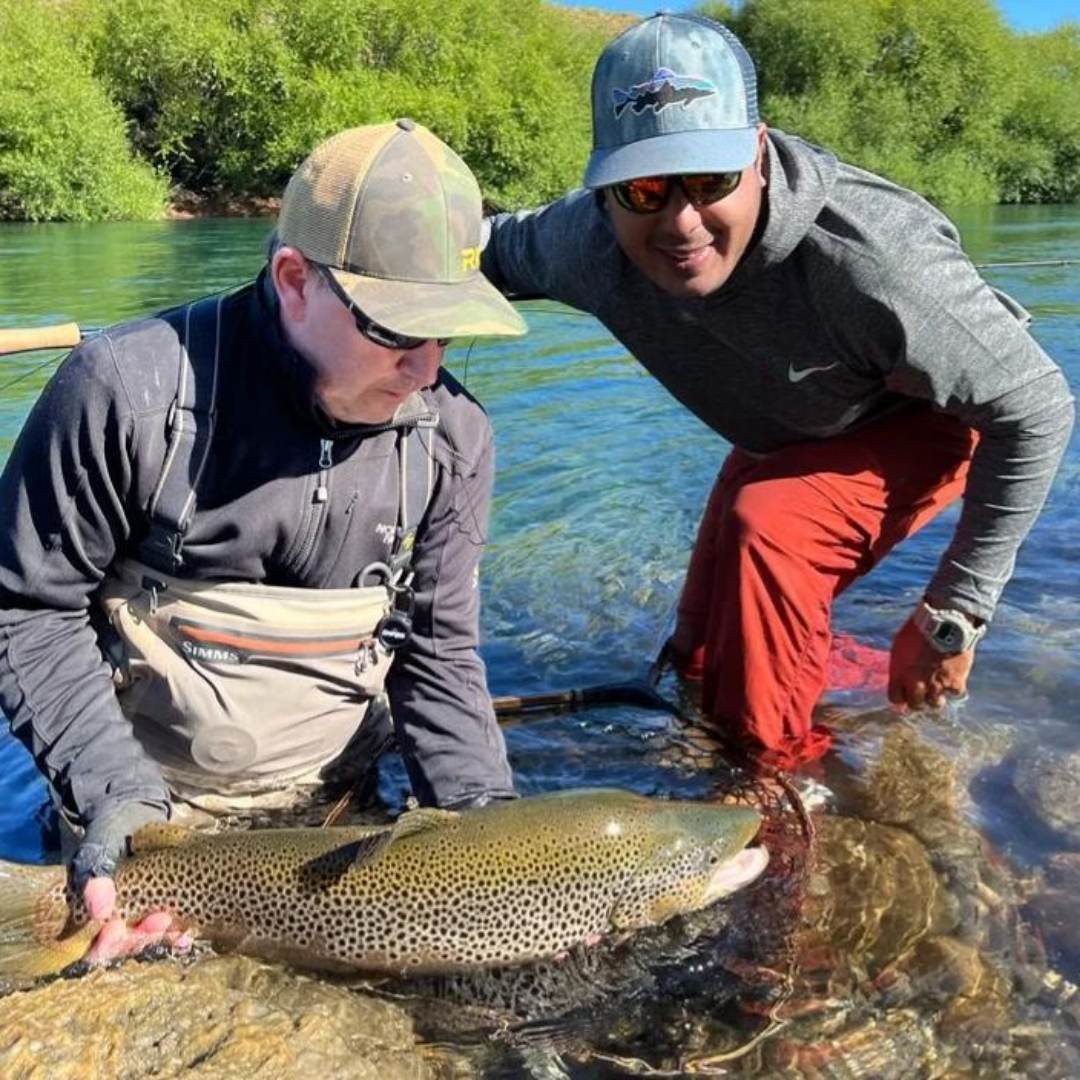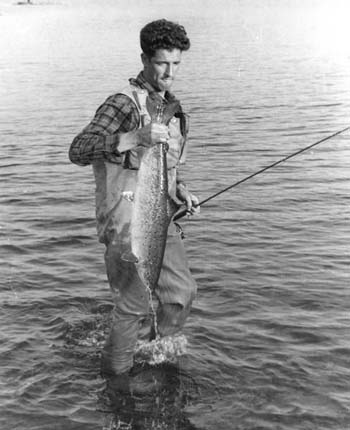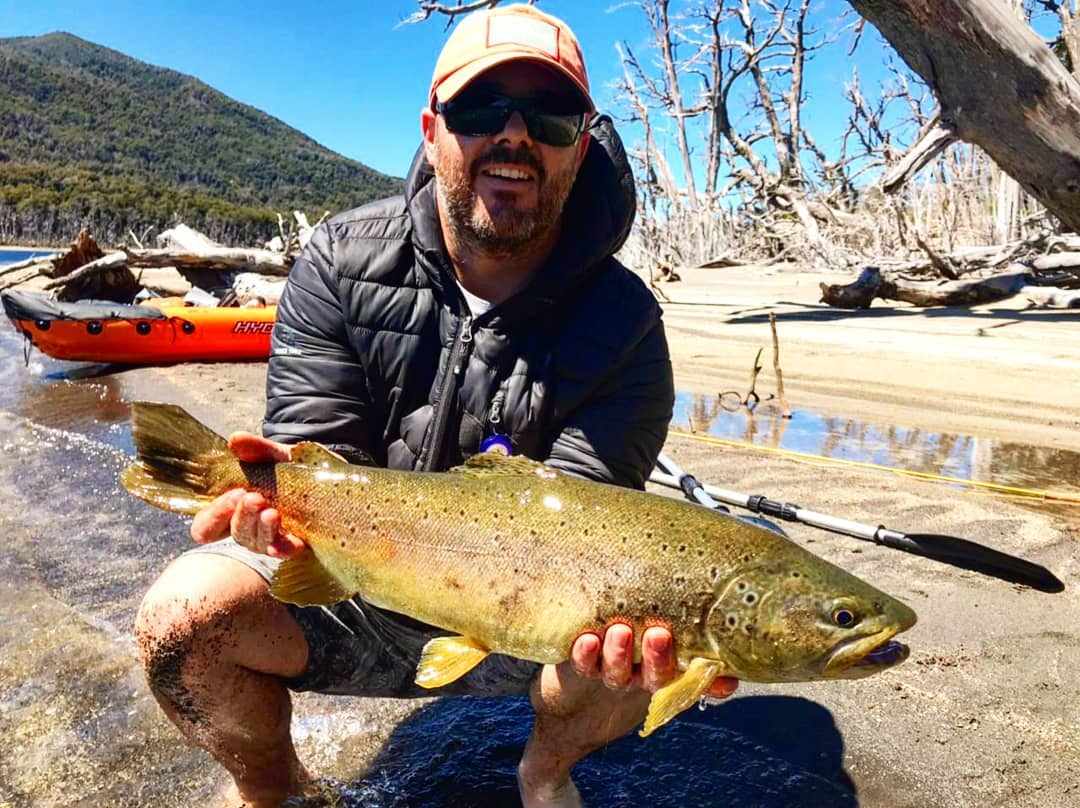
Ruben ends this 2023 season with a beautiful brown.
We fly tyers may have entered a new dimension in tying trout flies
By Skip Clement with Leandro Longobardi
Someday, when asked who broke the glass ceiling of tying small, classic trout flies on tubes rather than the much-favored hook, I hope they remember Ruben Martin and Leandro Longobardi, a collaboration I’m proud to have orchestrated.
Ruben Martin’s high rank in the world fly tying community lends considerable credence to the idea I have held for decades that small, classic trout flies tied on tubes rather than on conventional hooks sometimes create fly fisher advantages.
This collaboration launched a new, better way to catch trouts in situations never explored with a sustained effort or by someone with such a high profile as Ruben Martin.
If you were asked if a trout would eat Royal Wulff fly tied on a hook, most, if not every, fly fisher would answer, of course.
Now that that has cleared the air, what if somebody tied a Royal Wulff Fly on a tube the same size as the hook-tied fly? Would you balk?
Well, rest at ease, soldier; the tube fly has inherent advantages and no disadvantages, but for some reason, universally thought too difficult to tie until Ruben Martin proved that somebody could tie small, classic trout flies on a tube.
Any intermediate-level fly tyer can tie small; classic trout flies on a tube. So small that nymphs and drys are on the table and in play. A place few envisioned as being possible or practical.
You can seat the hook on a tube-tied fly, any reasonably sized hook or style hook you think best to get an eat and make it down facing or up facing. And the change out of a hook is simple and fast.
Too, once a tube fly is engaged, it is often possible to eliminate the trout from using it as leverage because the fly will ride up the leader out of the way and live undamaged to fight another day.

Lee Wulff holding a large salmon, at or near River of Ponds. The Royal Wulff pattern was created in the 1930s by Lee Wulff, who collaborated with Dan Bailey during the development of his hair wing patterns. Bailey encouraged him to rename the flies. The original names were Ausable Gray, Coffin May, and Bucktail Coachman. Finally, it became the Grey Wulff, White Wulff, and then Royal Wulff. It was created by modifying another famous fly, the Royal Coachman. The Royal Wulff replaced the Coachman’s flimsiness and fragileness on rougher water by implementing new materials. Through this, Wulff increased the buoyancy and has proven to be a fantastic dry fly that trout love.
Ruben Martin has shown us all that ultra-small, classic trout flies “can be” readily tied on tubes
Note: In the coming weeks, Ruben will put up a video with accompanying text in English and Spanish with a materials list [recipe] and other helpful information.
Watch Ruben assemble the Royal Wulff Tube Version (2.5cm length approx – .98″).
The Royal Wulff is one of the most famous and effective dry flies; this speaks of its enormous versatility and application in the fishing of many species worldwide. Its tube version provides another aspect of this great fly’s incredible diversity of applications.
Recipe:
Tube: Classic tube 1.8 mm / Thread Tail: UTC 70 Red / Body: Peacock Herl / [Genetic Hackle coachman brown] / Wings: polypropylene yarn
Previous Tube Video:
Dry Fly Humpy
[https://youtu.be/8SD8zkSKPm4]
Featured Image by Leandro Longobardi


